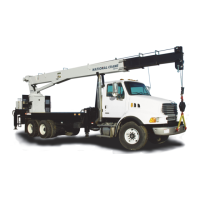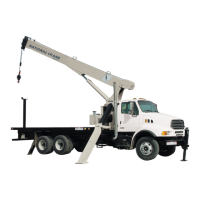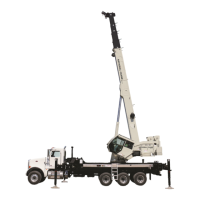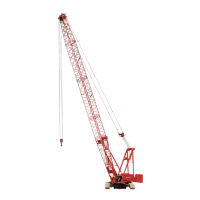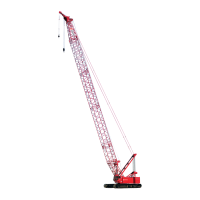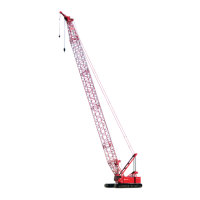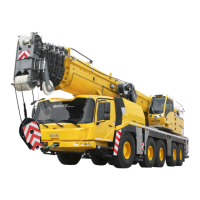SERVICE 1400H OPERATOR AND SERVICE MANUAL
5-2 Published 10-30-2014 Control # 040-09
SERVICE AND REPAIR
The information supplied in this section of the manual is
designed to assist you in service and repair of your National
Crane. Inspection, lubrication and general maintenance
information are found in two previous sections of this
manual. Before attempting to perform any service work, the
machine must be shut down as outlined under Maintenance
Procedure in the Maintenance section of this book.
Generally, a study of the hydraulic schematics in
conjunction with a systematic procedure to locate and
correct the problem will enable a skilled mechanic to
determine the problem and correct it. If at any time you
cannot find or correct the problem, contact your local
distributor or National Crane Product Support Department.
Be sure you have your parts and service book, model
number and serial number at hand when you call. This
information is on the serial number placard located on the
crane frame.
The following general suggestions should be helpful in
analyzing and servicing your crane. Use the following
systematic approach should be helpful in finding and fixing
problems:
1. Determine the problem.
2. List possible causes.
3. Devise checks.
4. Conduct checks in a logical order to determine the
cause.
5. Consider the remaining service life of components
against the cost of parts and labor necessary to replace
them.
6. Make the necessary repair.
7. Recheck to ensure that nothing has been overlooked.
8. Functionally test the new part in its system.
Note: Your safety and that of others is always the
number one consideration when working around
cranes. Safety is a matter of thoroughly understanding
the job to be done and the application of good common
sense. It is not just a matter of “Do's” and “Don'ts”. Stay
clear of all moving parts.
Cleanliness
An important item in preserving the long life of the crane
is keeping dirt out of working parts. Enclosed compartments,
seals, and filters have been provided to keep the supply of
air, fuel and lubricants clean. It is important that these
enclosures be maintained.
Whenever hydraulic, fuel, lubricating oil lines are
disconnected, clean the adjacent area as well as the point of
disconnect. As soon as the disconnection is made, cap, plug
or tape each line or opening to prevent entry of foreign
material. The same recommendation for cleaning and
covering apply when access covers or inspection plates are
removed.
Clean and inspect all parts. Be sure all passages and
holes are open. Cover all parts to keep them clean. Be sure
parts are clean when they are installed. Leave new parts in
their containers until ready for assembly.
Hydraulic Systems
Contaminants in a hydraulic system affect operation and
will result in serious damage to the system components.
Dirty hydraulic systems are a major cause of component
failures.
If evidence of foreign particles is found in the hydraulic
system, flush the system.
Disassemble and assemble hydraulic components on a
clean surface.
Clean all metal parts in a nonflammable cleaning fluid.
Then lubricate all components to aid in assembly.
Inspect all sealing elements (O-ring, gaskets, etc.) when
disassembling and assembling the hydraulic system
components. Installation of new sealing elements is always
recommended.
When installing metal hydraulic tubes, tighten all bolts
finger tight. Then, in order, tighten the bolts at the rigid end,
the adjustable end, and the mounting brackets. After tubes
are mounted, install the hoses. Connect both ends of the
hose with all bolts finger tight. Position the hose so it does
not rub the machine or another hose and has a minimum of
bending and twisting. Tighten bolts in both couplings.
Due to manufacturing methods, there is a natural
curvature to a hydraulic hose. The hose should be installed
so any bend is with this curvature.
In case of replacement hoses with angled stem reusable
fittings, the hose curvature must be taken into consideration
when assembling and positioning the angled stem.
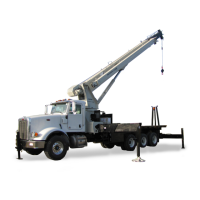
